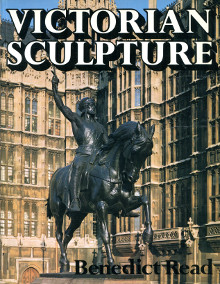Fils du philosophe et critique d'art
Herbert Read (1893-1908),
Benedict Read, né en 1945, est le grand historien de la
sculpture anglaise du XIXe siècle. Sa somme sur la
sculpture victorienne reste, trente ans après sa parution, l'ouvrage de référence sur le sujet.
B. Read a également publié une étude sur la sculpture pré-raphaélite, en 1991, et un ouvrage sur l'
Albert Memorial, en 2000.
"The aim of this book, précise l'auteur dans sa préface, is to offer an introduction to a particular, large area of artistic activity,
Sculpture in Britain between 1830 and about 1914. The fact that no such introduction exists in part explains how the book came about and its manner of presentation. Originally I was asked by Alan Bowness to give a brief survey of the subject to his Courtauld Institute students ; but it soon became clear to me that with no frame of reference on which to base either my account or their comprehension, it was essential to go right back to the basis [...] Chapters I to 6 are very much focused on the 1830s to the 1870s, the period that hat hitherto wholly lacked a conceptual framework of presentation [...] The period from the 1870s onwards -covered in chapters 8 to 10- has more apparent cohesion to it, thanks to the published accounts of such as Gosse and Spielmann."
Sur le point d'achever son travail, l'auteur a tenu à exprimer sa dette envers deux figures majeures de l'histoire de l'art britannique :
Rupert Gunnis, "whose
Dictionnary of British Sculptors1660-1851 in fact extends its coverage over a good two-thirds of the period I deal with and has been a constant source of information. Second only in this respect and equal in value as a source of inspiration and a testimony to the value of studying this period has been the work of Sir
Nikolaus Pevsner, to which again I am greatly indebted."
